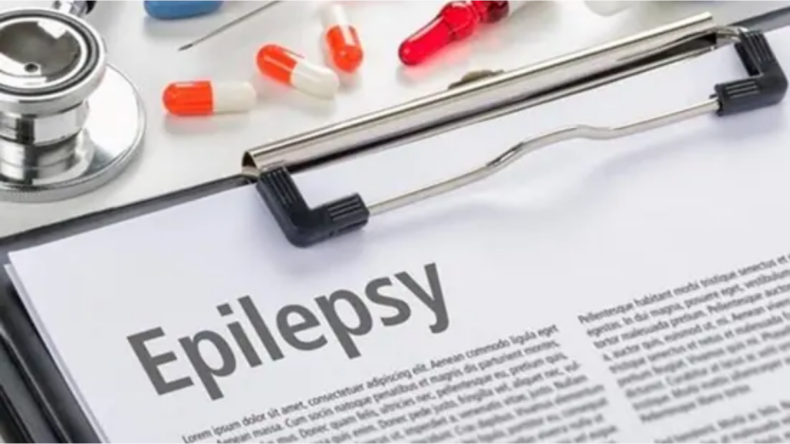On 17th of November, National Epilepsy Day is observed to raise awareness in India.
Epilepsy is a neurological illness characterized by abnormal brain activity that results in seizures. It might be an epileptic attack if you see someone who becomes disoriented, loses focus for a few minutes, and then becomes weary after that—those individual needs immediate medical assistance.
While Epilepsy affects 50 million individuals globally, India represents about 10-20 percent (5-10 million) of the global epilepsy burden. Dr Rima Chaudhari, Consultant-Neurology, Fortis Hospital, Mulund, presents information about this noncommunicable brain condition and how to manage it on National Epilepsy Day (November 17).
Seizures, odd behaviour, feelings, and even loss of awareness are symptoms of Epilepsy, which is caused by abnormal and excessive electrical activity in the brain. Some people gaze blankly for a few seconds during a seizure, while others have recurrent twitching of their limbs or legs.
You don’t necessarily have Epilepsy if you have a single seizure. According to Dr Chaudhari, an epilepsy diagnosis usually requires at least two unprovoked seizures. A person’s consciousness and response are reduced during a seizure, and they typically have no idea what’s going on. Dr Chaudhari states there is no warning before an episode, and the client is fully aware shortly following.
What is Epilepsy?
Epilepsy is a neurological illness in which brain activity becomes aberrant, resulting in seizures or episodes of odd behaviour, feelings, and even loss of awareness. Epilepsy may strike anybody at any time. Males and females of various races, ethnic origins, and ages are affected by Epilepsy.
The signs and symptoms of a seizure can be rather varied. Some persons with Epilepsy gaze blankly for a few seconds during an episode, while others move their limbs or legs frequently.
A single seizure may not necessarily indicate Epilepsy. For an epilepsy diagnosis, at least two attacks without a recognized cause (unprovoked seizures) must occur within 24 hours of each other.
Symptoms:
Seizures can disrupt every process that your brain regulates since Epilepsy is caused by aberrant brain activity. The following are some of the indications and symptoms of an episode:
- Temporary perplexity
- A bout of gazing
- Muscle spasms
- Jerking motions of the arms and legs that are uncontrollable
- Consciousness or awareness loss
- Fear, anxiety, or a sense of déjà vu are all psychological symptoms.
The severity of the symptoms varies based on the type of seizure. A person with Epilepsy will, in most situations, experience the same sort of seizure every time, and therefore the symptoms will be consistent from episode to episode.
Seizures with a single focus:
The term “focal seizures” refers to seizures that appear to be caused by aberrant activity in only one part of your brain. These seizures can be divided into two groups:
Seizures that occur in clusters but do not result in a loss of consciousness. These seizures, also known as simple partial seizures, do not result in a loss of consciousness. They can affect emotions and the appearance, smell, feel, taste, and sound of objects.
Some people get a sense of déjà vu. In addition to uncontrollable jerking of one body part, such as an arm or leg, this type of seizure can cause spontaneous sensory symptoms such as tingling, dizziness, and flashing lights.
Focal seizures are accompanied by a loss of consciousness. These seizures, formerly known as complex partial seizures, include a shift or loss of consciousness or awareness. This form of the episode might make you feel as if you’re in a dream.
You may gaze into space and not usually respond to your environment or do repetitive activities such as hand rubbing, chewing, swallowing, or walking in circles during a focal seizure with decreased consciousness.
Other neurological illnesses, such as migraine, narcolepsy, or mental illness, might mimic the symptoms of focal seizures. To identify Epilepsy from other diseases, a thorough examination and testing are required.
Seizures that are all over the place:
Generalized seizures are seizures that appear to affect all parts of the brain. There are six different forms of generalized seizures.
Seizures that do not occur, and children are more likely to have absence seizures, also known as petit mal seizures. The last 5-10 seconds are characterized by looking into space with or without subtle body movements such as eye blinking or mouth smacking. These seizures can happen in clusters, up to 100 times each day, and cause a momentary loss of consciousness.
Seizures that are tonic:
Tonic seizures are characterized by rigid muscles and might impair consciousness. These seizures mainly affect the muscles in your back, arms, and legs, and they might cause you to lose consciousness.
Seizures of atonic nature:
Muscle control is lost during atonic episodes, commonly known as drop seizures. Because this usually affects the legs, you may find yourself collapsing or falling down.
Clonic seizures:
Clonic seizures are characterized by jerking muscular movements that are recurrent or rhythmic. The neck, face, and arms are commonly affected by these convulsions.
Myoclonic seizures. Myoclonic seizures are characterized by quick, short jerks or twitches of the upper torso, arms, and legs.
Tonic-clonic seizures: The most severe form of epileptic seizure is tonic-clonic seizures, often known as grand mal seizures. They can induce a loss of consciousness and stiffness, twitching, and trembling of the body. They can make you lose control of your bladder or bite your tongue.
When should you see a doctor?
If any of the following occurs, get medical attention right away:
- Moreover, five minutes had passed since the seizure began.
- After the episode ceases, neither breathing nor consciousness returns.
- A second seizure occurs very quickly after the first.
- You’re suffering from a high temperature, and you’re expecting a child.
- You’ve been diagnosed with diabetes.
- During the seizure, you hurt yourself.
- Even if you’ve been taking anti-seizure medication, you’re still having seizures.













